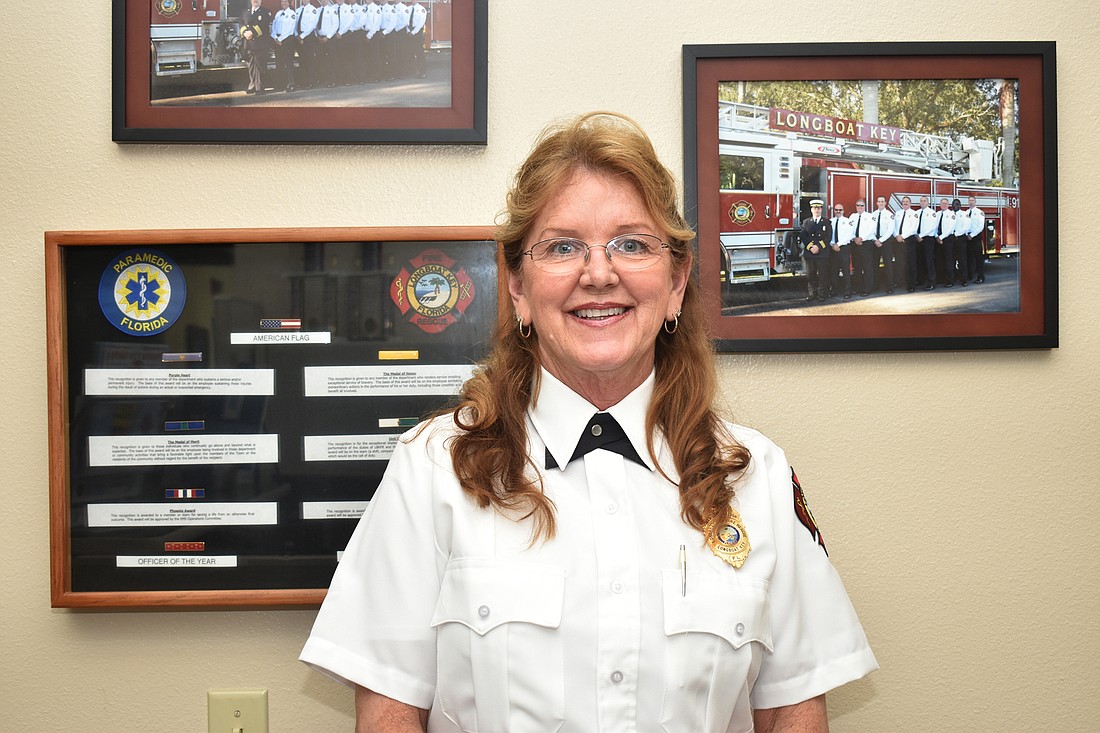- December 18, 2025
-
-
Loading

Loading

For then-Sarasota fire marshal and current Longboat Key assistant chief and fire marshal Jane Herrin, the week of Sept. 10 started out normally — except the President was coming to Emma E. Booker Elementary School that Tuesday.
Exciting, but nothing to sweat over. The fire marshal is responsible for getting people out safely during an emergency and doing their best to prevent emergencies in the first place, so Herrin and her team went about their normal routines. They made sure equipment, evacuations and everything safety-related was up to snuff before George W. Bush touched down in Sarasota.
“The week before he arrived, our goal was to go in and inspect the building to make sure all the safety equipment was up and working and everything else was there,” Herrin said. “After we did that, when he arrived, our job was to make sure everything's safely maintained and if there is a situation, that we handle the evacuation and anything else that may come up, pertaining to safety.”
Herrin and about five of her inspectors were stationed around the school and by the classrooms where President Bush was preparing for the school visit. It was a typical day, Herrin said. She was excited to be at work, in uniform, in the same room as the President, which is what sticks out the most.
“My kids weren’t born, so that’s when I was working 60 hours a week, but it was your typical day,” Herrin said. “Obviously in Sarasota, we’ve had a lot of influential people come in and out, but obviously when the President comes to town it’s a big deal. There was a lot of Secret Service and a lot of people. Afterwards I just sat down and thought, ‘Holy crud.’ In the morning, though, it was just excitement.”
Before long, President Bush was settled in, reading with a gaggle of second graders, and Herrin was on stand-by, ready to respond to an emergency if there was one. Then, one of her inspectors got a call from his dad. The first tower had been struck.
“I found out about the towers probably even before the Secret Service,” Herrin said.
They turned to the TVs in the media room and saw the tragedy unfolding. It became apparent quickly that something huge was happening.
“The Secret Service, by the expressions on their face, you knew,” Herrin said. “We were sitting there watching on little 12 inch TVs. Once you saw that second one hit we knew we were under attack.”
President Bush made his initial statement about the attack from the elementary school. Herrin said that when he came in, he was totally in control with zero panic.
“Within a couple minutes, he (President Bush) came through the media center and came to the podium and made his statement (and said) that he would not be staying,” Herrin said. “Right before he got to talk to the kids he came in and addressed everybody in there … and then Secret Service and our ambulance crew, who was outside too, took him into the breezeway, into the portico between the two classrooms. He was in the main office and then he was gone.”
After the President was gone, Herrin said she stood, shocked and in disbelief, with her inspectors and the Secret Service who stayed behind as the rest of the morning’s events unfolded. They were thinking of the lives that had been lost and
“And then you sit and you stop and think, ‘Why didn’t they hit the school?’” Herrin said. “They had to have known he was there.”
It wasn’t long before first responders in the area started flying to New York to help, including many that Herrin knew. Everybody wanted to go, she said, but you had to get your shifts covered, so a lot of firefighters couldn’t leave. She watched a web of communication develop between firefighters from different cities.
“Some of them were there for months,” Herrin said. “Fire stations were empty. They were running calls and all the firemen were gone. There was a whole shift that was gone from several stations, and what they did is they got the ones who knew the area and then they filled in with other firemen from all over the United States. It was quite a feat, to say the least … You just became another firefighter up there.”